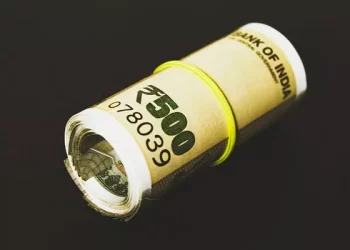South Africa’s currency system has undergone significant changes over the years, primarily driven by the need for cost-effectiveness, technological advancement, and the evolving habits of consumers. Among the coins once considered part of everyday transactions, the 5 cent coin stands out as a denomination that has become increasingly scarce in circulation. This guide aims to explore the status of the 5 cent coin in South Africa, provide insight into why such coins are becoming obsolete, and clarify whether or not they are still considered legal tender.
Understanding how and why certain denominations fall out of favour or get discontinued is essential, not only for consumers but also for businesses, collectors, and financial institutions. In this article, we will explore the life cycle of the 5 cent coin, its current legal standing, and practical implications for South Africans today. The information herein is structured in an accessible yet professional tone to ensure clarity and comprehension.
1. The Origin and Purpose of the 5 Cent Coin
The 5 cent coin was introduced as part of South Africa’s decimal currency system, which came into effect on 14 February 1961. Decimalisation replaced the British system of pounds, shillings, and pence with the rand and cent system. The introduction of coins like the 5 cent was intended to facilitate ease of calculation and promote uniformity in transactions.
Initially, the 5 cent coin held significant purchasing power, and it was a practical tool in day-to-day commerce. For many years, it was used to buy small items such as sweets, bread rolls, or even for tipping. However, over time, inflation eroded its value. As consumer habits changed and prices increased, the practical utility of the 5 cent coin began to wane. Despite its reduced relevance in commercial transactions, it continued to be minted and circulated for decades.
2. Economic Forces Behind the Decline
There are several economic reasons why lower-denomination coins, including the 5 cent coin, become impractical to maintain. These factors are based on a cost-benefit analysis performed by monetary authorities, and they typically include:
- Rising Minting Costs: The production cost of a coin often surpasses its face value when metal prices rise or manufacturing becomes more expensive.
- Decreased Purchasing Power: As inflation progresses, the real-world value of small coins diminishes, rendering them less useful.
- Consumer Disinterest: Modern consumers often prefer electronic payment methods and rounded prices, reducing the need for minor denominations.
- Retail Trends: Businesses find it cumbersome to store and count small coins, encouraging price rounding.
These economic trends eventually led the South African Reserve Bank and the South African Mint to re-evaluate the necessity of the 5 cent coin in the monetary ecosystem.
3. The Phasing Out of the 5 Cent Coin
In 2012, the South African Reserve Bank (SARB) and the South African Mint officially stopped minting the 5 cent coin. The decision was informed by several years of data showing the coin’s declining use and rising minting costs. Though not immediately demonetised, the halting of production marked the beginning of the end for the 5 cent coin.
As a result of this policy change, 5 cent coins have gradually disappeared from circulation. Most financial institutions and businesses ceased accepting them due to operational inconvenience. The public was encouraged to either spend or deposit remaining coins, though no strict deadline was imposed for their use.
4. Current Legal Status
Technically, the 5 cent coin remains legal tender in South Africa. This means it is still recognized by law as acceptable for settling debts and making purchases. However, the practicality of using it is an entirely different matter. Many stores and service providers no longer accept the coin due to its negligible value and the inconvenience it presents during transactions.
Key Considerations:
- Legal but Rarely Accepted: While legally valid, businesses are not obligated to accept every denomination.
- Consumer Awareness: Most people are unaware of the coin’s ongoing legal status, contributing to its decline.
- Bank Policies: Some banks may still accept them for deposit but no longer issue them.
In essence, while you may technically use a 5 cent coin, finding a place that will accept it poses a significant challenge.
5. Impact on Consumers and Businesses
The absence of the 5 cent coin has led to various adjustments in how transactions are conducted, especially those involving cash payments. One of the primary methods used to adapt is the practice of rounding. According to guidelines by SARB:
- Transactions ending in 1 or 2 cents are rounded down to the nearest 0.
- Transactions ending in 3 or 4 cents are rounded up to 5 cents.
- Transactions ending in 6 or 7 cents are rounded down to 5 cents.
- Transactions ending in 8 or 9 cents are rounded up to the nearest 0.
This method of rounding ensures that transactions are balanced over time, and neither consumers nor retailers experience significant losses.
For Consumers:
- Less physical change to carry
- Slight changes in final transaction amounts
- A push toward electronic payments
For Businesses:
- Simplified cash handling
- Reduced time spent on giving change
- Lower transportation and security costs associated with handling coins
6. Coin Collecting and the 5 Cent Coin
Although largely obsolete in practical use, the 5 cent coin has found a new home among collectors and numismatists. Older coins, especially those from special editions or particular years, may carry value far beyond their face value.
Factors That Affect Collector Value:
- Rarity: Coins from limited mints or specific years
- Condition: Coins in uncirculated or mint condition
- Historical Significance: Coins marking national events or issued during transitional years
Collectors often seek out these coins for their historical and aesthetic value. As such, if you possess a stash of 5 cent coins, it may be worth consulting a coin appraisal expert or joining a numismatic society.
7. The Future of Small Denomination Coins in South Africa
The 5 cent coin is not the only low-value coin facing extinction. Other coins such as the 10 cent and 20 cent pieces are also under scrutiny. As electronic payment methods become more accessible and widely used, the reliance on physical currency continues to decline.
Possible Future Developments:
- Further Rounding Practices: More businesses may adopt a simplified pricing structure.
- Demonetisation: SARB may eventually declare small coins no longer legal tender.
- Increased Digital Inclusion: Government and private sectors may promote digital payments to reduce cash dependency.
These developments are consistent with global trends, where countries such as Canada and Australia have already phased out their smallest denominations without major disruption.
8. Practical Advice for South Africans
If you still have 5 cent coins lying around, here are a few practical suggestions:
- Deposit Them: Check with your local bank branch if they still accept 5 cent coins.
- Use Them in Bulk: Some retailers may still accept them for large coin payments.
- Donate to Charity: Some organisations accept coins as part of their fundraising efforts.
- Sell to Collectors: Especially if your coins are old or rare.
- Keep for Historical Interest: They may gain value over time as obsolete currency.
Understanding the limited use of the 5 cent coin allows consumers and businesses to manage their cash assets more efficiently and avoid unnecessary complications at the point of sale.
Conclusion
In summary, while the 5 cent coin is still legally recognized as tender in South Africa, its practical use in daily transactions has effectively come to an end. Economic factors such as inflation, minting costs, and consumer behaviour have all contributed to its decline. Though not officially demonetised, the coin has been functionally phased out, with few retailers or institutions willing to accept it.
For collectors, the 5 cent coin may hold some value, but for the average consumer, it has largely become a relic of the past. Moving forward, South Africans are encouraged to adapt to the evolving monetary landscape by embracing digital payment options and being aware of the legal and practical limitations of obsolete coinage. As society progresses, understanding these shifts ensures financial literacy and preparedness in an ever-changing economic environment.
Related Topics:



























